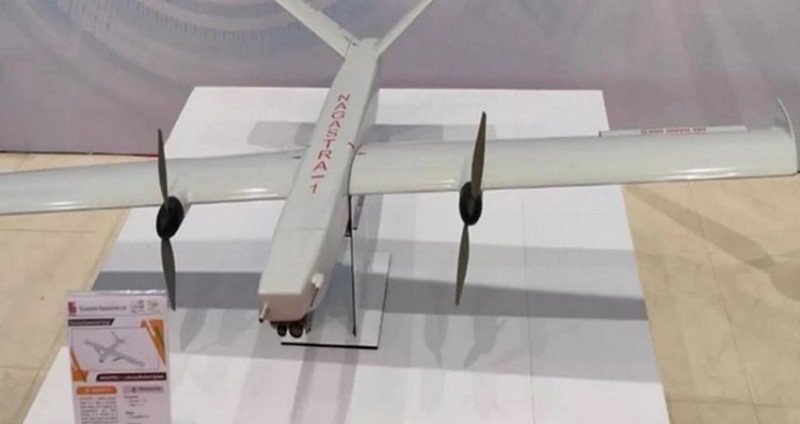
Nagpur-based Solar Industries has successfully delivered the first batch of its indigenously developed Nagastra-1 Loitering Munitions to the Indian Army. This milestone marks a significant advancement in India's defense capabilities and self-reliance in military technology.
Key Features of Nagastra-1 'Suicide Drone'
The Nagastra-1 is a state-of-the-art UAV-based loitering munition designed for precision aerial strikes. Here are its standout features:
Precision Strike Capability: In its "Kamikaze mode," Nagastra-1 can accurately neutralize targets with GPS-enabled precision, achieving a strike accuracy within 2 meters.
High Altitude Operation: Capable of flying above 4,500 meters, it avoids radar detection.
Surveillance Equipment: Equipped with day-night cameras and a warhead for soft-skin targets.
Endurance and Range: The electric UAV can operate for 60 minutes, with a control range of 15 kilometers in man-in-loop mode and 30 kilometers in autonomous mode.
Recovery Mechanism: If a mission is aborted, it can be safely retrieved and reused using a parachute system.
Emergency Procurement and Delivery
Under the Indian Army's Emergency Procurement Powers, an order for 480 Nagastra-1 units was placed with Solar Industries' subsidiary, Economic Explosives Ltd (EEL). Following successful inspections, 120 units were delivered to an Army Ammunition Depot. Defense officials confirmed, "After successful pre-delivery inspections, EEL delivered 120 Loiter Munitions to an Army Ammunition Depot."
Strategic Advantages
Nagastra-1 drones offer several strategic benefits:
Precision Strikes: Ideal for targeting enemy camps, launch pads, and infiltrators, minimizing risk to soldiers.
Silent Operation: Electric propulsion ensures low acoustic signatures, perfect for covert infantry operations.
Cost-Effectiveness: These drones provide a budget-friendly solution for countering lower-end threats like border infiltrators.
Manu Pubby from The Economic Times highlighted, "The drones are a cost-effective solution for targeting relatively lower-end threats, such as groups of infiltrating terrorists on the border. The drones also feature a parachute recovery mechanism, allowing them to be retrieved and reused in case of an aborted mission."
Indigenous Development and Cost Efficiency
Developed entirely in India with over 75% indigenous content, Nagastra-1 significantly reduces dependence on foreign technology. This domestic production capability leads to considerable cost savings compared to similar foreign systems. Additionally, the drones can operate in extreme temperatures and high-altitude conditions, enhancing their strategic utility.
Future Prospects
Loitering munitions like Nagastra-1 have proven effective in recent conflicts, such as the Ukraine-Russia war and the Armenia-Azerbaijan skirmishes. The Indian Army’s investment in these technologies is part of a broader strategy to boost domestic production of standoff weapons. The success of Nagastra-1 also opens up potential for exporting these advanced munitions to allied nations.
The Nagastra-1 UAV, designed for precision strikes and recovery, represents a significant leap forward in India's military technology, reducing reliance on foreign suppliers and bolstering indigenous production capabilities.
Read More News
UK PM Sunak Warns: Voting for Nigel Farage Could Hand Election to Labour
G7 Summit: Rishi Sunak and Giorgia Meloni's Warm Welcome Goes Viral
China's Military Drills Near Taiwan Achieve Targets, Ready for Further Action?